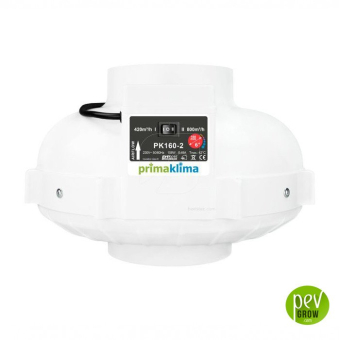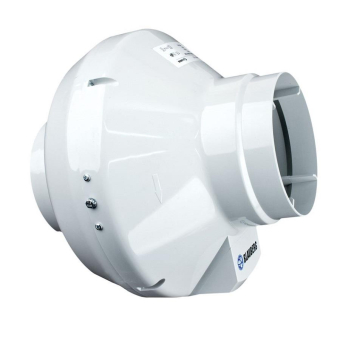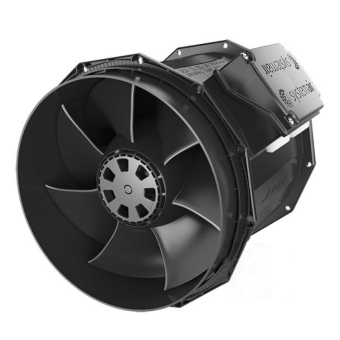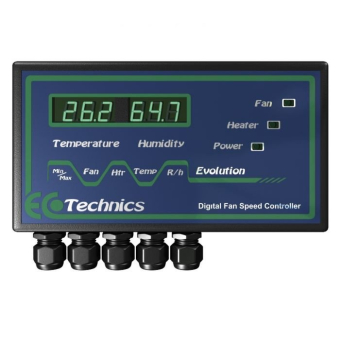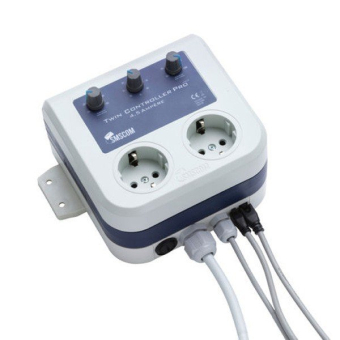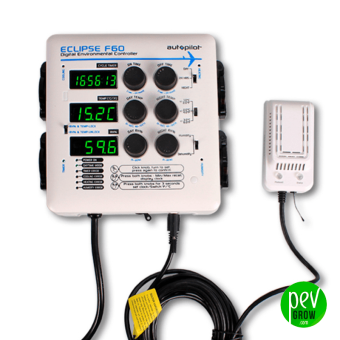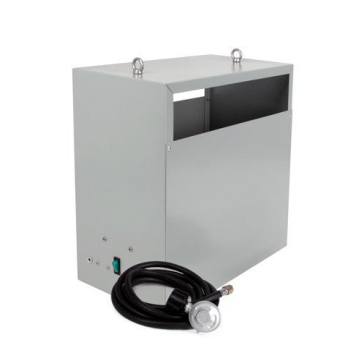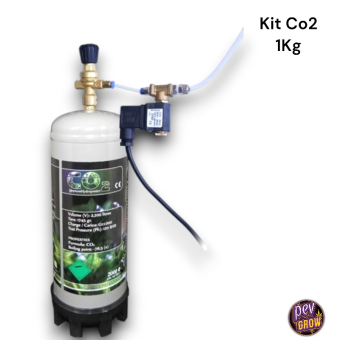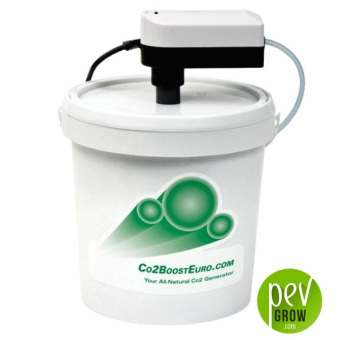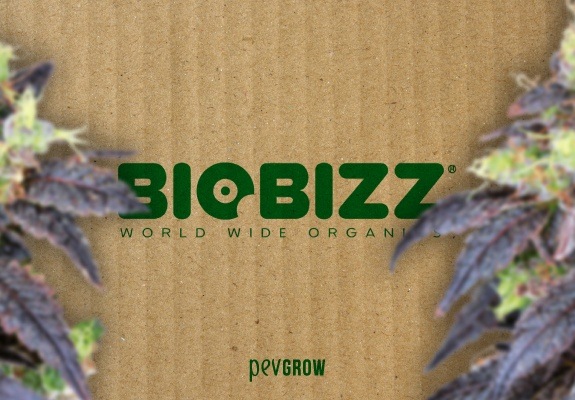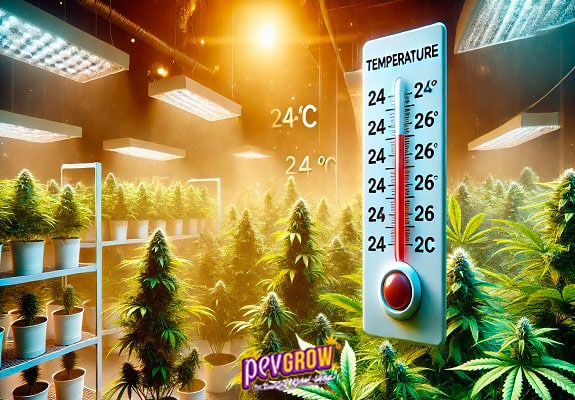

07-07-2023 09:00:39 - Updated: 7 July, 2023
Indoor marijuana cultivation requires careful planning and management to ensure an optimal environment for healthy plant growth. Among the fundamental aspects are extraction, intraction and ventilation, which play a crucial role in controlling air, temperature and humidity. In this article, we will explain these concepts in detail, explaining how extraction is calculated and how from this data we can determine the appropriate intraction to ensure a successful crop. If you need to know how to assemble an indoor growing kit in a tent, take a look at this other article, we are sure you will solve your doubts there.
⭐ Calculate indoor air extraction
Extraction refers to the removal of stale and hot air, as well as the renewal of air within the growing space. This is essential to maintain proper air circulation, control temperature, renew the amount of CO2 and eliminate unwanted odors. To calculate the necessary extraction, several key factors must be considered.
⛳ How to calculate air extraction
- Size of the growing space: The volume of the growing area will influence the amount of air that must be extracted to maintain optimal conditions. The ideal is to multiply the cubic meters of the growing space by 60. Why by 60? Because the power of the extractors is marked in cubic meters per hour (M3/h) and the hours have 60 minutes. During the off cycle it can be enough to multiply the cubic meters by 30, but if you want to be on the safe side it is better to multiply by 60 for the whole cycle.
- Extractor power: The capacity of the air extractor is measured in cubic meters per hour (m³/h) and should be selected according to the size of the space and the amount of plants grown. It is recommended that the extractor be capable of extracting the entire air from the space in 3-5 minutes.
- Extraction coefficient: It is important to take into account the resistance to airflow due to elements such as ducts, filters and bends. These factors reduce the extraction efficiency and should be considered when calculating the capacity of the exhaust fan.
✨ Intraction How is it calculated?
Intraction consists of the entry of fresh, clean air into the crop to ensure adequate oxygenation and carbon dioxide (CO2) levels necessary for photosynthesis. Calculating intraction will require taking into account the following aspects:
- Growing space size: As with the extraction calculation, the size of the growing area is critical in determining the amount of fresh air required.
- Extraction-to-intraction ratio: It is recommended that the intraction be approximately 80% to 90% of the total extraction. This ensures a balance between extraction and intraction, avoiding pressure fluctuations and efficient operation of the ventilation system.
- Power of the intraction fan: The intraction fan must be powerful enough to introduce the required amount of fresh air into the crop. It is recommended that its capacity be in accordance with the calculated extraction..
➕ Ventilation calculations
Also, in addition to extraction and intraction, general ventilation is essential to maintain an optimal environment in indoor marijuana growing. Ventilation helps to evenly distribute fresh air and control temperature and humidity. Some aspects to consider include:
- Circulation fans: These fans are used to move air within the growing space and ensure even distribution. They are strategically placed to avoid stagnation points and encourage uniform plant growth. In grow tents, clamp fans can be placed attached to the vertical metal bars that form the tent structure. In grow rooms, wall-mounted or even floor-standing fans are more common.
- Temperature and humidity controllers: The use of automatic controllers can help maintain optimal temperature and humidity levels in the grow room. These devices will adjust the power or on/off of fans according to preset conditions, ensuring a constant and favorable environment for plant development. There are simple controllers or very complete integrated control units, which in addition to the ventilation can regulate other appliances of the crop.
- Air Sock: Air Sock is a kind of sleeve that is connected to the intraction to allow a better distribution of the air that enters the crop. Let’s say that it acts a bit like a fan, since it releases air through the entire length of the tube it contains. It is a good investment because it facilitates a large air distribution and improves recirculation.
🚀 Other factors to consider
There are some factors that can change the ventilation needs in indoor marijuana growing, such as the amount of CO2 the plants receive or the stage of the crop they are in. It is important to take these factors into account to always try to adjust the best parameters.
CO2 and ventilation in indoor cultivation
When it comes to calculating air extraction or designing an efficient ventilation system for an indoor cannabis grow, it is crucial to consider the carbon dioxide factor. CO2 plays a fundamental role in plant growth and development, as it is an essential component for photosynthesis. However, it is important to consider its influence on the temperature of the growing environment.
When a CO2 concentration of up to 1500 parts per million (PPM) is provided, plants can assimilate heat better, in fact it is not a bad thing for them to have a higher temperature than normal because this forces them to open the leaf stomata more, and this allows them to assimilate a greater amount of CO2. In these cases the timer that regulates the extraction is programmed to run for a quarter of an hour every hour, or for half an hour every hour, so that the CO2 is maintained for a longer time and does not accumulate too much heat. The temperature can go up to 30º C or even 32º C.
Cultivation phases and their importance in the ventilation of indoor cultivation
Temperature and humidity are critical factors to consider in indoor marijuana growing, as they can have a significant impact on plant growth and development, and these parameters can also be adjusted through ventilation. It is important to understand that the recommended parameters vary by stage of cultivation, as each stage requires specific conditions for best results. Below are the recommended temperature and humidity differences for each stage of cultivation.
- Germination: During this initial stage, it is crucial to provide a warm and humid environment to encourage successful seed germination. It is recommended to maintain the temperature between 24°C and 28°C, while relative humidity should be around 70-80%. These optimum conditions will promote faster germination and a higher success rate in the emergence of healthy seedlings.
- Growth: In the vegetative growth phase, plants are developing their structure and foliage. During this stage, a slightly cooler and more humid environment is sought to promote vigorous growth. The recommended temperature is between 20°C and 26°C, and relative humidity is maintained between 50% and 70%. These conditions allow for robust plant growth and more efficient photosynthesis.
- Flowering: During the flowering phase, plants start to produce buds and different conditions are required to promote their optimal development. The recommended temperature during flowering is slightly cooler, in the range of 18°C to 24°C (64°F to 75°F). Also, relative humidity should be reduced to avoid problems such as mold and improve bud quality. It is recommended to keep humidity between 40% and 50%. These conditions help to avoid fungus problems and favor the formation of dense and resinous buds.
- Maturation: During the final stage of maturation, it is essential to further reduce humidity to prevent the development of mold and improve the quality of the buds. It is recommended to keep the relative humidity below 40%, preferably between 30% and 40%. The temperature during this stage can be slightly cooler, in the 16°C to 22°C range. These conditions help the buds to mature properly, developing their desired flavor, aroma and effects.
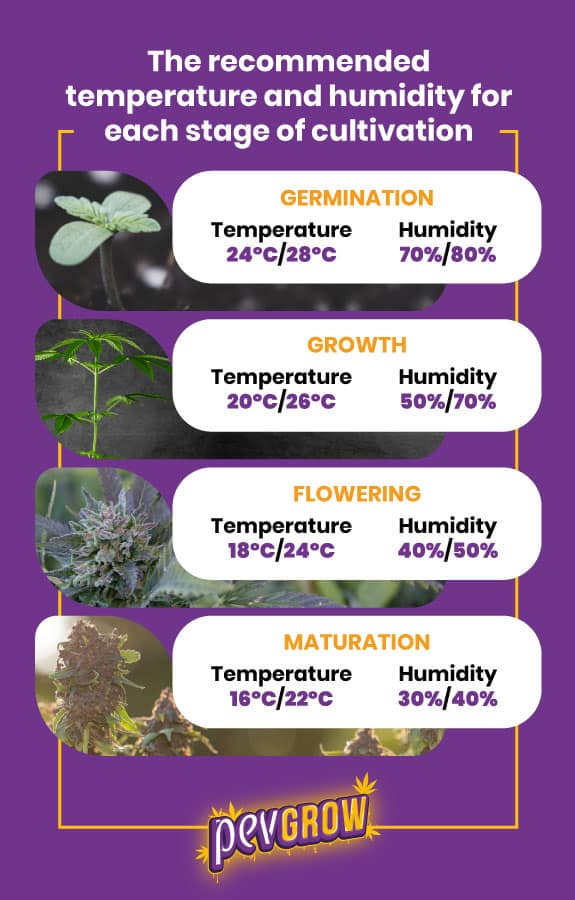
🔥 Conclusion
Extraction, intraction and ventilation are key elements in indoor marijuana growing. Calculating the right extraction and intraction is essential to maintain a balanced environment and provide plants with optimal conditions for healthy growth. Also, good general ventilation helps to control temperature and humidity in the grow. Remember that each crop may have specific requirements, so it is important to research and adapt these concepts to your particular needs.

